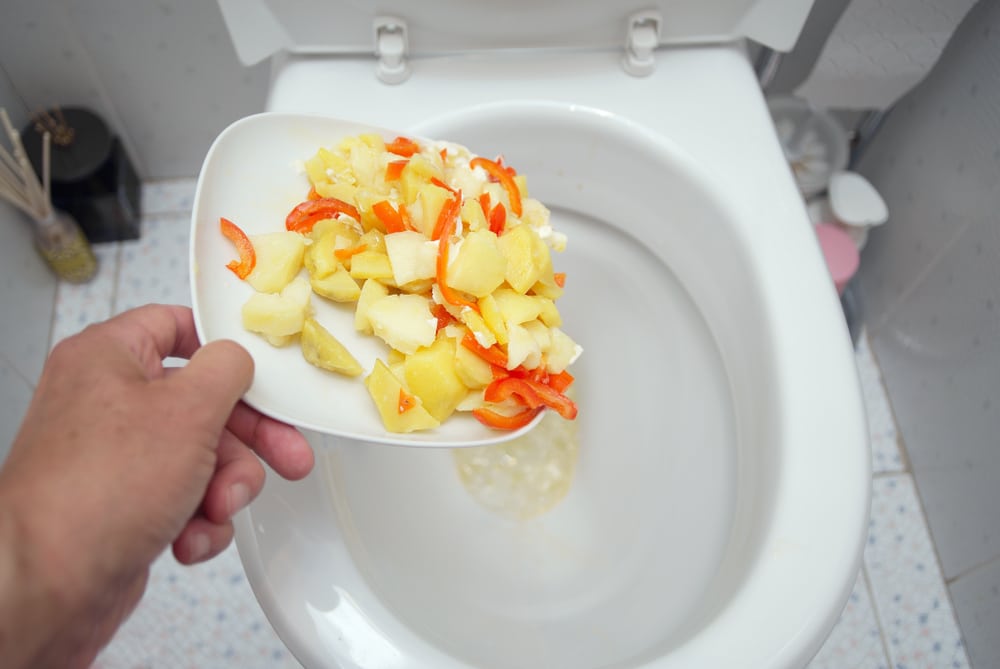Is it Practical to Dispose of Food Down the Toilet?
Is it Practical to Dispose of Food Down the Toilet?
Blog Article
On this page further down you can get additional helpful help and advice all about What Can Happen If You Flush Food Down the Toilet?.

Introduction
Lots of people are frequently confronted with the issue of what to do with food waste, particularly when it concerns leftovers or scraps. One common question that arises is whether it's alright to flush food down the toilet. In this short article, we'll explore the reasons why people could take into consideration purging food, the consequences of doing so, and alternate techniques for appropriate disposal.
Reasons people may consider purging food
Absence of understanding
Some individuals may not recognize the potential harm triggered by purging food down the toilet. They might erroneously believe that it's a safe practice.
Convenience
Purging food down the commode may look like a quick and simple service to dealing with unwanted scraps, particularly when there's no close-by trash bin readily available.
Laziness
In some cases, individuals might simply select to flush food out of large idleness, without taking into consideration the effects of their activities.
Consequences of flushing food down the commode
Environmental effect
Food waste that winds up in rivers can contribute to pollution and injury marine ecological communities. In addition, the water used to purge food can strain water resources.
Plumbing problems
Flushing food can bring about blocked pipelines and drains, causing costly pipes repair work and inconveniences.
Types of food that must not be purged
Fibrous foods
Foods with coarse appearances such as celery or corn husks can get entangled in pipelines and cause clogs.
Starchy foods
Starchy foods like pasta and rice can soak up water and swell, resulting in obstructions in pipelines.
Oils and fats
Greasy foods like bacon or food preparation oils ought to never be purged down the commode as they can solidify and trigger clogs.
Proper disposal methods for food waste
Utilizing a garbage disposal
For homes geared up with waste disposal unit, food scraps can be ground up and flushed through the plumbing system. Nonetheless, not all foods are suitable for disposal in this way.
Recycling
Specific food product packaging materials can be reused, minimizing waste and minimizing ecological impact.
Composting
Composting is a green method to take care of food waste. Organic products can be composted and utilized to enrich soil for horticulture.
The value of correct waste administration
Lowering environmental damage
Correct waste management methods, such as composting and recycling, assistance lessen contamination and preserve natural deposits for future generations.
Shielding plumbing systems
By staying clear of the method of flushing food down the commode, homeowners can prevent pricey plumbing repair work and keep the stability of their pipes systems.
Verdict
To conclude, while it might be tempting to flush food down the bathroom for convenience, it is essential to recognize the possible effects of this activity. By embracing appropriate waste administration practices and throwing away food waste properly, people can add to much healthier pipes systems and a cleaner atmosphere for all.
FLUSH FOOD DOWN THE TOILET?
FLUSHING FOOD CAN CAUSE BLOCKED DRAINS IN YOUR HOME
All of the plumbing fixtures in your home are connected to the same sewer pipe outside of your home. This outdoor sewer pipe is responsible for transporting all the wastewater from your home to the Council sewer mains. Even small pieces of food that go down the kitchen sink can cause problems for your sewer. It should therefore be obvious that flushing larger bits of food, such as meat, risks a clog in either the toilet itself or the sewer pipes. Flushing greasy food is even more problematic because oil coagulates when it cools, coating the interior lining of your pipes.
THE TOILET IS NOT A BIN
Food isn’t the only thing that people shouldn’t be flushing down the toilet. People use the toilet to dispose of all kinds of things such as tampons, makeup wipes, dental floss, kitty litter and even underwear. Water goes to great lengths to educate residents about the high costs and stress placed on wastewater treatment systems simply from people flushing the wrong stuff down the toilet. It costs taxpayers millions of dollars each year, and homeowners thousands in blocked drain repairs.
FLUSHING FOOD IS A WASTE OF WATER
Flushing food is a waste of our most precious resource - water. In June this year Level 1 water restrictions were introduced to protect water supply from drought conditions. Much of New South Wales continues to be affected by prolonged drought with recent figures revealing up to 97 per cent of the state remains in drought. Depending on whether you have a single or dual flush toilet, every single flush uses between five and 11 litres of water. In the current climate this is a huge amount of water to be wasting on flushing food that should be placed in the bin (or better yet, the compost).
https://www.jabplumbingsolutions.com.au/blog/can-you-flush-food-down-the-toilet

Do you appreciate more info about What Can Happen If You Flush Food Down the Toilet?? Put feedback down below. We will be delighted to know your feelings about this article. In hopes that you visit us again later on. Don't hesitate to take the opportunity to distribute this page if you enjoyed reading it. Thanks for taking the time to read it.
Click Here Report this page